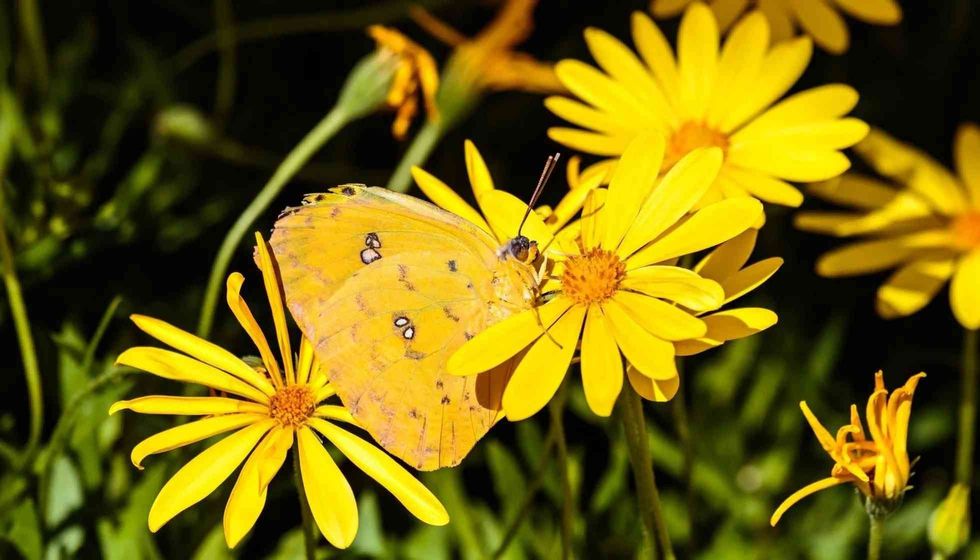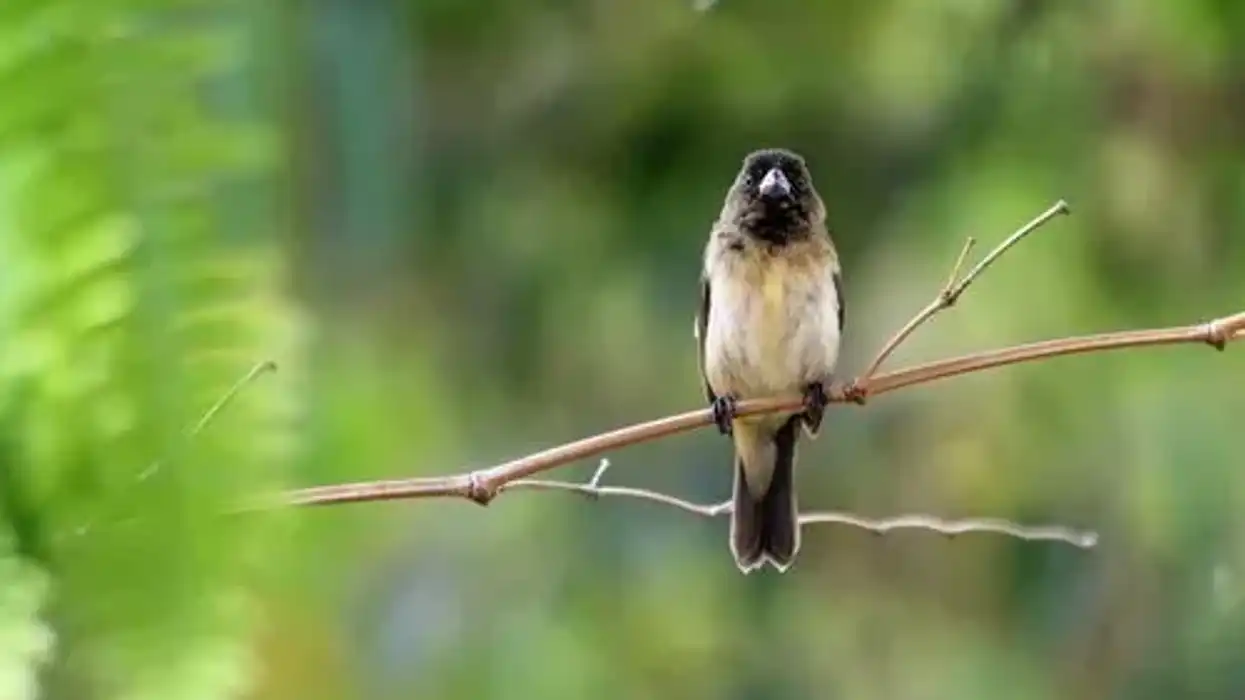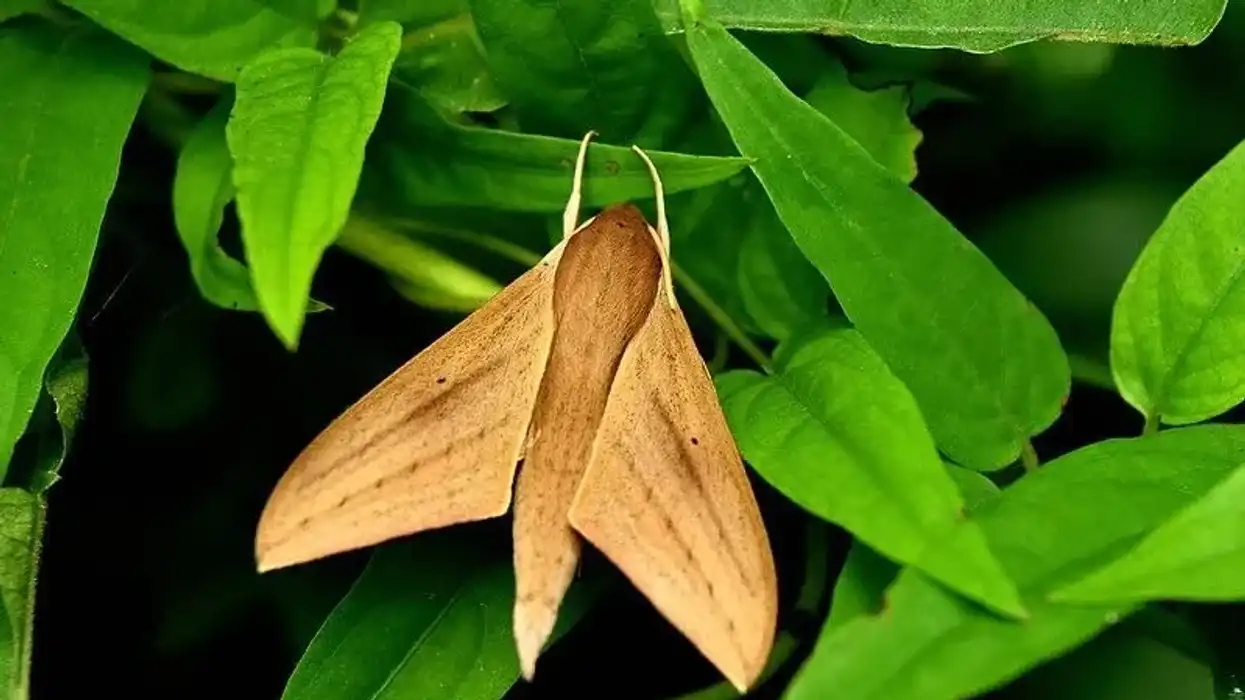The cloudless sulphur (phoebis sennae) is a medium-sized yellow butterfly from the family Pieridae, it is found throughout America. The average wingspan of these butterflies is about 2-3 in (5-7.6 cm) and clear signs of sexual dimorphism between males and females are visible.
There are three recognized subspecies of these butterflies known as Phoebis sennae amphitrite, Phoebis sennae sennae, and Phoebis sennae marcellina. The caterpillar feeds on flowers and leaves from partridge pea, cassia, and senna from the pea family before metamorphosing into a smooth chrysalis.
Both cassia and senna are poisonous, allowing these caterpillars to collect a toxic barrier against the predators. These caterpillars are considered evasive pests, as turn yellow when eating yellow flowers, and turn green when eating leaves.
Cloudless sulphurs have surprisingly long tongues, that help them to reach the nectar of even the narrowest and longest flowers. Adult butterflies are very clever at camouflaging themselves, typically by resting on flowers that closely match the bright yellow color.
If you liked these true facts about cloudless sulphur, then you'll surely like these facts about the white admiral butterfly and painted lady butterflies too!
Cloudless Sulphur Butterfly Interesting Facts
What type of animal is a cloudless sulphur butterfly?
A cloudless sulphur butterfly is a medium-sized butterfly from the order Lepidoptera, that looks similar to the yellow angled sulphur and satira sulphur.
What class of animal does a cloudless sulphur butterfly belong to?
A cloudless sulphur (Phoebis sennae) belongs to the class of Insecta.
How many cloudless sulphur butterflies are there in the world?
The total population size of these butterflies in the wild is unknown, though the wide range and comparatively ample population size of the butterfly indicate that this species is flourishing and will be able to survive for some time to come in the future.
Where does a cloudless sulphur butterfly live?
Cloudless sulphur butterflies (Phoebis sennae) range from northern Argentina through Central America, stretching to south Florida and south Texas. This butterfly species can also be found in Kansas, New Mexico, North Carolina, and southern Georgia.
This butterfly is available in abundant in the Amazon regions. These species are seasonal migrators but they do not travel far, these butterflies will travel to Florida from the month of June until February.
What is a cloudless sulphur butterfly's habitat?
The cloudless sulphur butterfly (Phoebis sennae) is found in gardens, tropical scrubs, forest edges, and fields. A male can be easily found on the rivers ledges and open spaces. Females can be found in the narrow parts of the forest along the edges.
Who do cloudless sulphur butterflies live with?
Cloudless sulphur butterflies (phoebis sennae) are solitary in nature just like most butterflies and are seen together with others only during the mating period. The cloudless sulphur butterflies are known for their migration in massive numbers towards the tropical regions during winter.
In very rare scenarios small groups of cloudless sulphur butterflies can be seen assembling together around mud pools.
How long does a cloudless sulphur butterfly live?
The average lifespan of an adult butterfly is two to four weeks in the wild.
How do they reproduce?
The breeding season of these bright yellow cloudless sulphur butterflies depends on the climate, as these species tend to spawn during midsummer to winter and year-round in the warmer climatic regions.
To attract a female and mate, males search for females throughout the day, and once it finds a suitable female, it lands beside the female making contact with her wings, then the female opens her wings and raises her abdomen giving approval for mating.
Cloudless sulphurs reproduce by laying eggs. The female butterfly lays a single egg on the tips of a senna, or cassia plant, where it grows into a caterpillar or larvae.
These caterpillar feeds on the leaves and flowers of the plants and grow larger in size and shed its skin to fit its growing body. And the chrysalis tissues are broken down and the adult butterfly body is formed.
What is their conservation status?
The cloudless sulphur (phoebis sennae) is listed as a species of Least Concern on the IUCN Red List, due to the abundant population of these butterflies throughout South America.
Cloudless Sulphur Butterfly Fun Facts
What do cloudless sulphur butterflies look like?

Male cloudless sulfur butterflies are usually solid yellow color, whereas, the females are also yellow in color but additional features visible are a dark spot at the center of each forewing and a black border on their yellow wings.
Male sulphur butterflies display some seasonal dimorphism during the winter their forms are usually larger and have darker markings on their wings.
How cute are they?
All butterflies species are beautiful, attractive, and cute insects and the cloudless sulphur with their bright yellow-colored wings are a treat for your eyes.
How do they communicate?
Unlike other species of butterflies who use chemical pheromones to communicate such as the purple emperor butterflies and morpho butterflies, the cloudless sulphur uses touch and smell to communicate with each other.
How big is a cloudless sulphur butterfly?
Butterflies are small creatures when compared to other species in the order Lepidoptera, an adult cloudless sulphur can reach up to 2-3 in (5-7.6 cm) wingspan.
How fast can a cloudless sulphur butterfly fly?
The reported flying speed of the cloudless sulphur butterfly is 4.9-6.8 mph (7.8-11 kph), these species try to stay near the ground and feed on the flowers.
How much does a cloudless sulphur butterfly weigh?
The cloudless sulphur (Phoebis sennae) is extremely light in weight and an adult can grow up to 0.004-0.006 lb (1.8-2.7 g).
What are the male and female names of the species?
No specific name has been assigned to either sex of this species.
What would you call a baby cloudless sulphur butterfly?
Similar to any other species of butterflies, baby cloudless sulphurs are called larvae or caterpillars and these caterpillars or larvae turn into a chrysalis before metamorphosing into an adult.
What do they eat?
The caterpillar feeds on pea pods of the cassia and senna plants from partridge pea chamaecrista.
Adults prefer the nectar of wild morning glory, milkweeds, hibiscus, pentas, dewdrops, azaleas, Mexican sage ad autumn sage.
The color of the caterpillars is depended on the feeding design, if the caterpillars feed on colored leaves or yellow flowers it will turn the same color, and if it feeds on green leaves of the senna and cassia plant it turns green.
These butterflies acquire nutrients and minerals from the soil while feeding on the mud puddles.
Are they dangerous?
No, these butterflies are not dangerous at all, unlike the monarch butterflies that carry harmful toxins in their bodies.
Would they make a good pet?
Keeping cloudless sulphurs as pets can be hectic work as they require large open space to fly and a specific diet of senna and cassia plants which is not easy to provide.
Did you know...
These butterflies fly low during migration and are only 9.9 ft (3 m) above the ground and if they face any obstacle on their way, instead of adjusting their path they will try to fly over it.
Some larvae feed mostly on yellow flowers of the cassia and senna plants in the wild and these larvae turn yellow in color with diagonal bands.
To attract this beautiful butterfly to your garden you need to plant their host plants, such as Bahama cassia, wild senna, partridge pea, and other native species. Adults mostly feed on a vast variety of nectar plants, such as honeysuckle or petunias with the help of their long proboscis.
These butterflies are very choosy when it comes to roosting, they look for the perfect place to roost and it may even take several attempts for them to find a preferable site for roosting.
Is the cloudless sulphur butterfly endemic?
No, the cloudless sulphur butterfly (Phoebis sennae) is not endemic. In the wild, these butterflies migrate towards the south. Cloudless sulphur butterfly migration occurs usually in late summer and these species follow the sun and migrate only 12 mi (19.3 km) a day.
How to tell if a cloudless sulphur butterfly is male or female
Cloudless sulphur butterflies display sexual dimorphism between both sexes, males are usually solid yellow in color and females are yellow in color with a dark spot on the center of each fore wing and black borders on their wings. Male butterflies display seasonal dimorphism as they grow larger in the summer during the breeding season.
Here at Kidadl, we have carefully created lots of interesting family-friendly animal facts for everyone to discover! For more relatable content, check out these red admiral butterfly facts and viceroy butterfly facts for kids.
You can even occupy yourself at home by coloring in one of our free printable butterfly side coloring pages.









